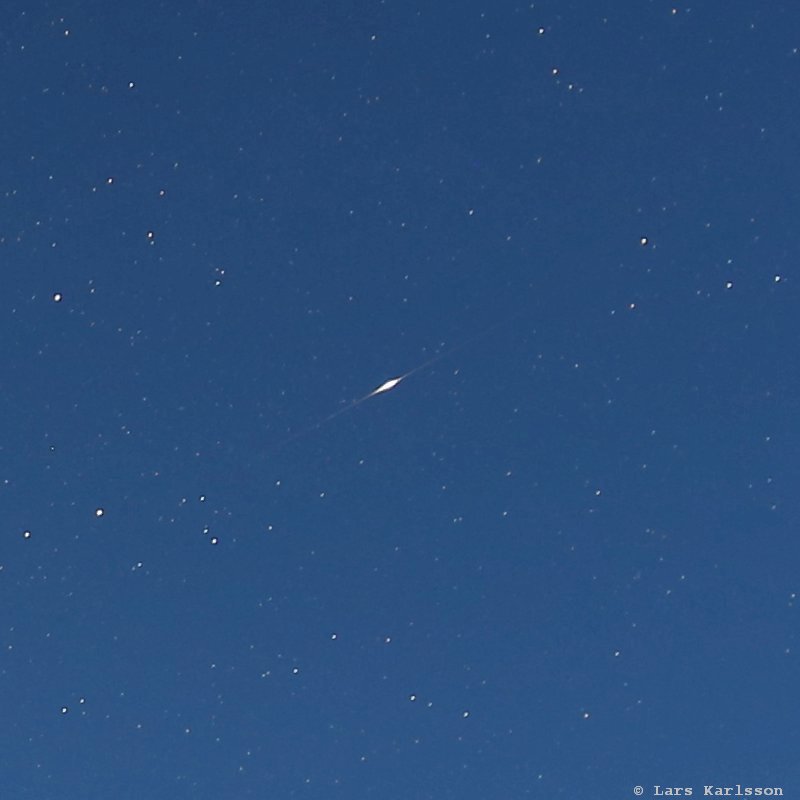ID 2753
20:33:00 UT
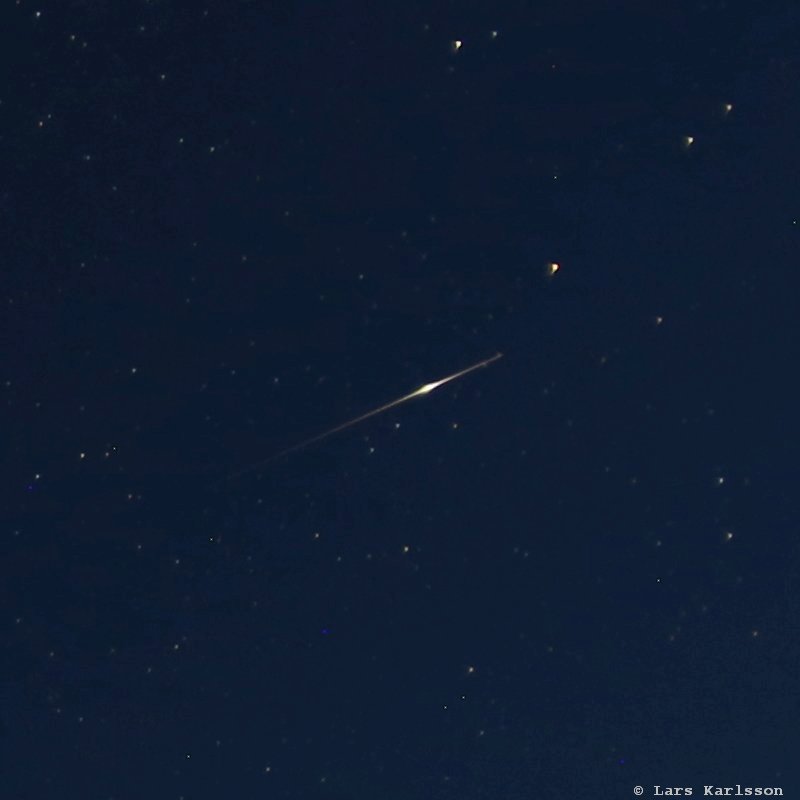
This looks like a meteor, but is it a Perseid meteor? All Perseid meteors shall come from a single point,
the Perseus constellation.
Look at the time lapse video below if you can see the direction.
The lens is of fisheye construction and then have strong distorsion which make it difficult to see the real direction.
|
ID 2828
21:02:36 UT
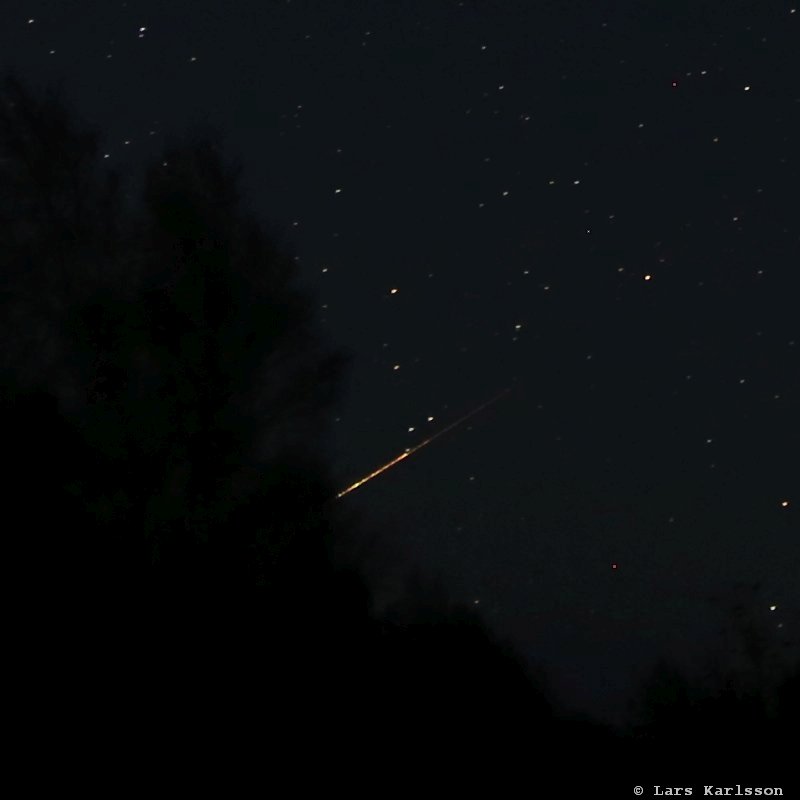
This meteor I saw also by the naked eye, very strong and only partly above the horizon.
|
ID 3111
22:46:10 UT
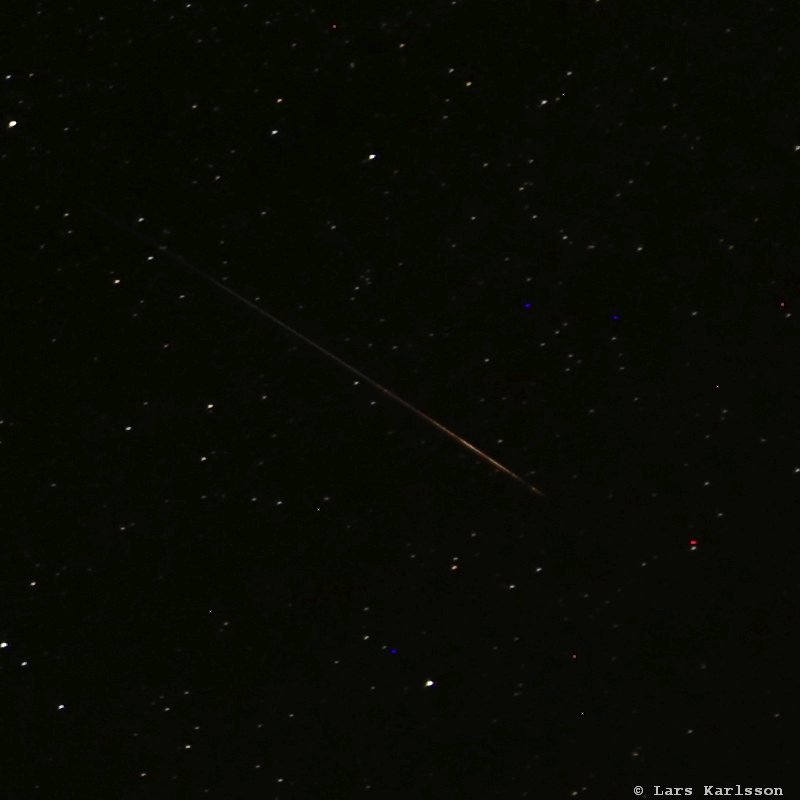
Notice how much darker the back ground sky have been now, something that I never can see in Stockholm where I live.
|
ID 3126
22:51:39 UT
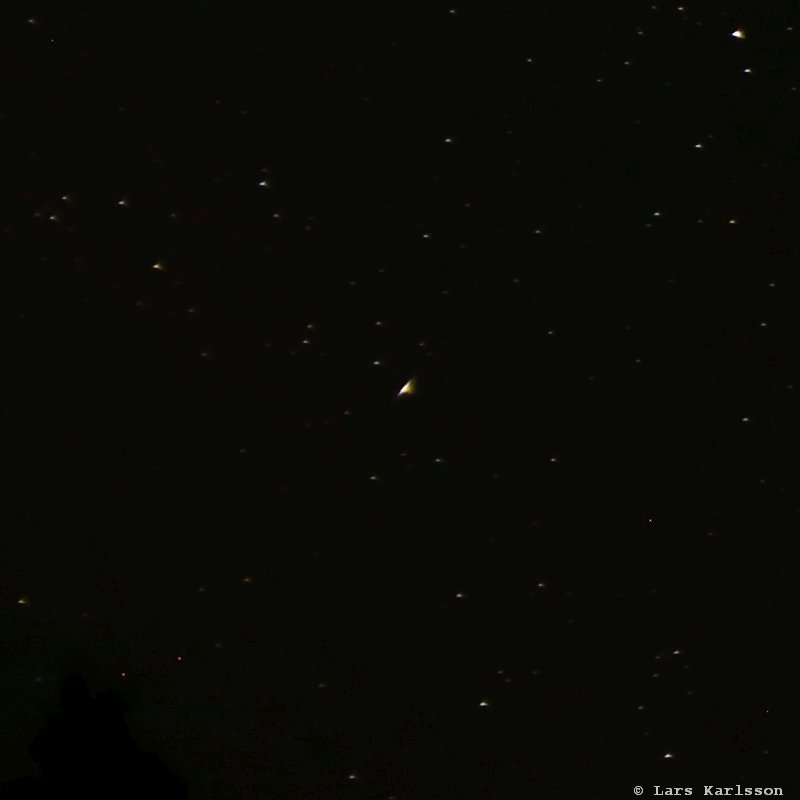
This meteor comes from the Perseus constellation head on to us.
The triangular form of the point is partly because of the lens imperfection at the edges of the field.
|
ID 3333
00:07:24 UT
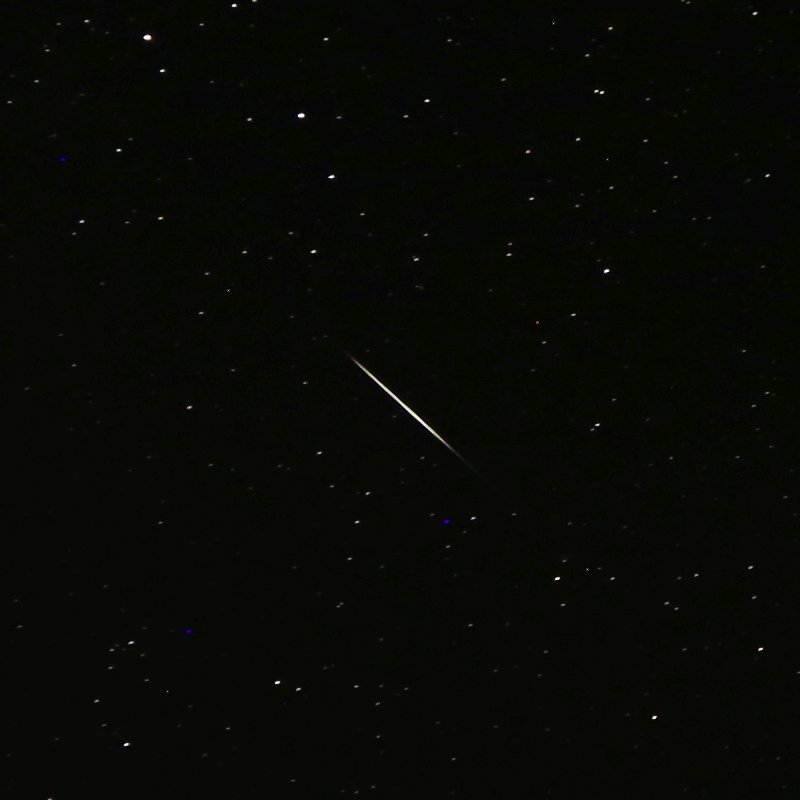
The last meteor, just before the camera battery gave up.
|
| Coordinates/Direction : | Perseids |
| Object size : | all sky, 180 degree diagonal |
| Object magnitude : | |
| Object : | targetting for the Perseid Meteor Shower |
| Date : | 2018-08-10 |
| Time (UT) : | 20:17:15 to 00:07:24 |
| Mount : | Tripod |
| Guide : | - |
| Lens/telescope : | Zenitar fisheye 16mm, f/2.8 (set to f/4.0) |
| Corrector/Barlow : | - |
| Filter : | none |
| camera : | Canon 6D, controlled by an intervalo meter |
| Film/CCD : | Jpg |
| Exp. time : | Each photo 20 seconds, ISO 800 (first one) and ISO 1600 the rest |
| Image process tool : | IrfanView |
| Processing : | Crop to 800 x 800 pixels |
| Weather : | clouds in early evening and later a clear sky |
| Comment : |
We were very lucky, about ten o'clock local time all the clouds disappeared.
The sky was really dark compare to what I'm used to. |
| More to know : |
Wikipedia:
https://en.wikipedia.org/ wiki/ Perseids |
